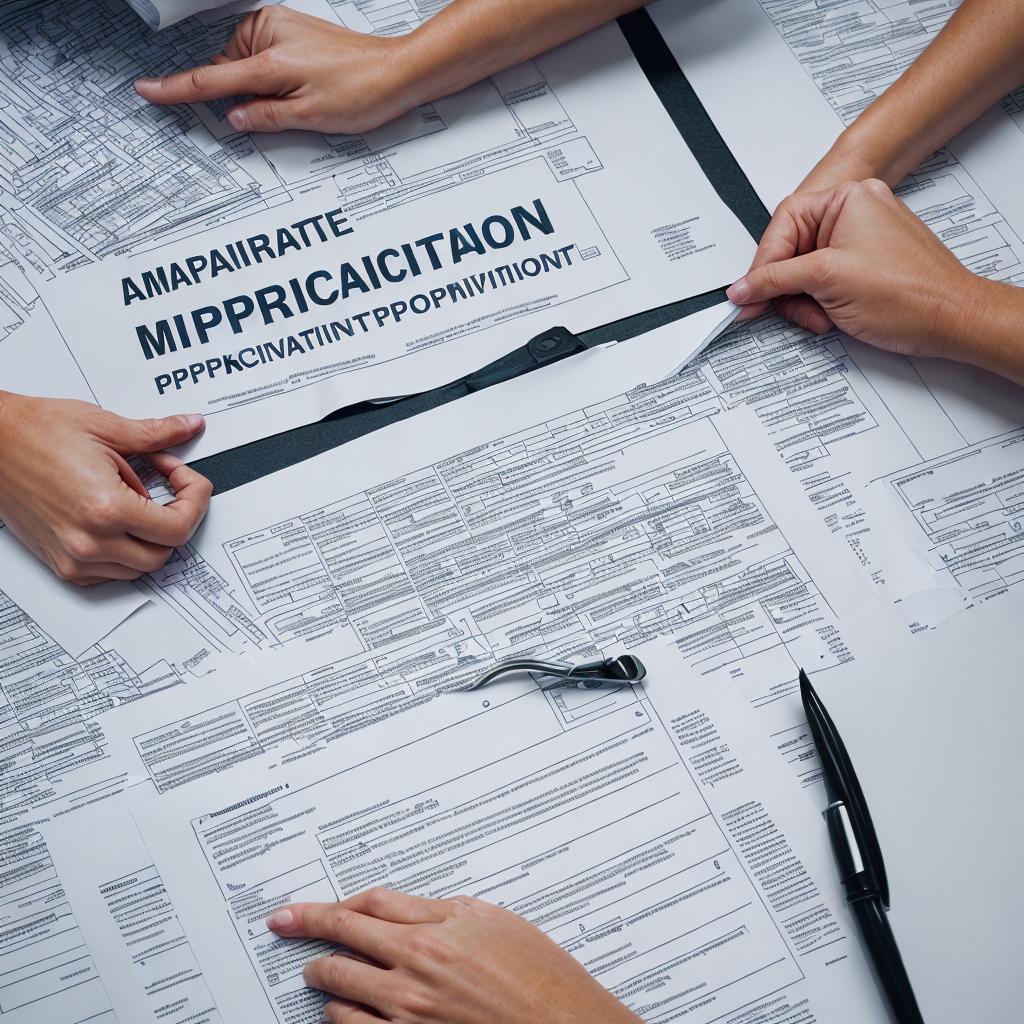Mastering the Medicaid Application Submission Process

Are you ready to conquer the daunting task of submitting a Medicaid application? Look no further!
This guide will arm you with all the necessary information and steps to master the process.
From understanding eligibility criteria to gathering required documents, completing the application form, and finally submitting it online or in-person, we’ve got you covered.
Get ready to navigate the world of Medicaid with confidence and ease. You’ll wonder why you ever found it intimidating in the first place!
Key Takeaways
- Provide accurate and complete documentation to verify eligibility and avoid delays or denial of coverage.
- Include proof of identity, income, assets, and current living situation in the application.
- Choose between online or in-person submission, considering convenience and potential assistance from Medicaid staff.
- Follow up on the application status by checking online portals or contacting the local Medicaid office, using the application number and personal information.
Eligibility Criteria for Medicaid Application
To determine if you meet the eligibility criteria for a Medicaid application, you must provide the necessary documentation and meet certain income and asset requirements. The first step in the process is to gather all the required documents, such as proof of identity, proof of residency, and proof of income. These documents are essential to verify your eligibility and ensure that you meet the necessary criteria. It’s important to provide accurate and up-to-date information to avoid any delays or complications in the application process.
In addition to the documentation, you must also meet certain income and asset requirements. Medicaid is a program designed to provide healthcare coverage for low-income individuals and families. As such, there are income limits in place to determine eligibility. These limits vary by state, so it’s important to research and understand the specific requirements for your state. Assets, such as bank accounts, investments, and property, are also taken into consideration when determining eligibility.
It is crucial to provide all the necessary documentation and meet the income and asset requirements to ensure a smooth and successful Medicaid application process. Failure to do so may result in delays or even denial of coverage. Therefore, it’s advisable to review the eligibility criteria and gather all the required documents before submitting your application.
Gathering Required Documents and Information
Now that you have understood the eligibility criteria for a Medicaid application, it’s time to gather all the required documents and information. This step is crucial to ensuring a smooth and successful application process.
To begin, you’ll need to gather proof of identity for all household members applying for Medicaid. This can include birth certificates, social security cards, or passports.
Additionally, you’ll need to provide proof of income for each household member. This can be in the form of pay stubs, tax returns, or documentation from government assistance programs.
It’s also important to gather documentation related to any assets you or your household members may have, such as bank statements or property deeds.
Lastly, you’ll need to provide documentation of your current living situation, such as a lease agreement or utility bills.
Completing the Medicaid Application Form
Once you have gathered all the required documents and information, it is time to complete the Medicaid application form. This form is crucial in determining your eligibility for Medicaid benefits, so it is essential to fill it out accurately and completely. The form will ask for personal information such as your name, address, and contact details. You will also need to provide details about your income, assets, and expenses. To help you understand the sections of the Medicaid application form, here is a breakdown:
| Section | Description | Tips |
|---|---|---|
| Personal Information | Provide your name, address, and contact details. | Double-check for any errors or missing information. |
| Income | List all sources of income, including wages, pensions, and benefits. | Include all sources of income, even if they are not taxable. |
| Assets | Declare your assets such as bank accounts, property, and investments. | Be thorough and transparent, providing accurate values for each asset. |
| Expenses | Detail your monthly expenses, including rent, utilities, and medical bills. | Keep track of your expenses and provide accurate information. |
| Supporting Documents | Attach any required documents, such as pay stubs or bank statements. | Make sure to include all necessary documents to support your application. |
Submitting the Application Online or In-Person
Choose whether to submit your Medicaid application online or in-person.
The decision of how to submit your application depends on your personal preference and convenience.
Submitting the application online is a popular option as it allows you to complete the process from the comfort of your own home. To apply online, visit your state’s Medicaid website and follow the instructions provided. You’ll need to create an account, provide the necessary information, and upload any required documents. Make sure to review your application thoroughly before submitting it to avoid any errors or omissions.
On the other hand, if you prefer a more hands-on approach, you can submit your application in-person at a local Medicaid office. This option allows you to receive assistance from Medicaid staff who can answer any questions you may have and help you complete the application accurately. It’s important to note that due to the ongoing COVID-19 pandemic, some Medicaid offices may have limited in-person services or require appointments. Therefore, it’s advisable to check with your local office beforehand.
Ultimately, whether you choose to submit your application online or in-person, the most important thing is to ensure that all the required information is provided accurately and in a timely manner.
Following up on Your Medicaid Application Status
To track the status of your Medicaid application, you can easily check online or contact your local Medicaid office. Checking online is a convenient and efficient way to get updates on your application. Most states have an online portal where you can create an account and log in to view the status of your application. The online portal will provide you with real-time updates, letting you know if your application has been received, is being reviewed, or if any additional information is needed. It’s important to regularly check the online portal for any updates or notifications from the Medicaid office.
If you prefer a more direct approach, you can contact your local Medicaid office. They’ll have staff members who can provide you with information about the status of your application. It’s a good idea to have your application number or any other relevant information readily available when you contact them. They may ask you for some personal information to verify your identity. Be prepared to provide them with your full name, date of birth, and social security number.
Frequently Asked Questions
Can I Apply for Medicaid if I Am Already Receiving Other Government Assistance Programs Such as SNAP or Tanf?
Yes, you can apply for Medicaid even if you already receive assistance from other government programs like SNAP or TANF. Eligibility for Medicaid is determined separately from other assistance programs.
Is There an Age Limit for Individuals Applying for Medicaid?
There’s no age limit for Medicaid application. It’s available to individuals of all ages. Make sure to provide all the necessary information and documentation to complete the application successfully.
Can I Apply for Medicaid if I Am Currently Unemployed?
Yes, you can apply for Medicaid if you are currently unemployed. Medicaid eligibility is based on income and other factors, not employment status. You may qualify for coverage based on your income level.
Are There Any Restrictions on the Type of Healthcare Services Covered by Medicaid?
Yes, there are restrictions on the type of healthcare services covered by Medicaid. The specific services covered vary by state, but generally include doctor visits, hospital care, prescription drugs, and preventive care.
How Long Does It Typically Take to Receive a Decision on a Medicaid Application?
It usually takes a few weeks to receive a decision on your Medicaid application. Hang in there, it may feel like waiting for a pot to boil, but soon you’ll have the answer you need.



